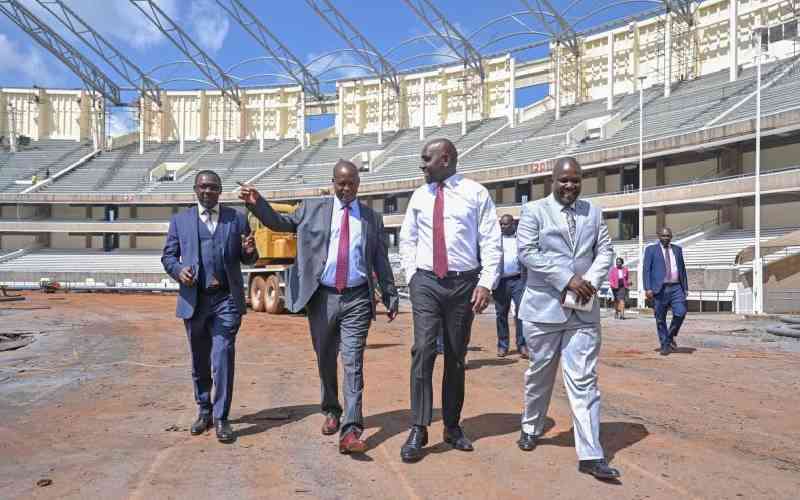Touted as an alternative to the more expensive brick-and-mortar houses, prefabricated buildings might not be cheaper in the long run, after all. PAUL KARIUKI explores the reasons
Dan Maigwa believes we may not be far from embracing prefabricated houses as happens in advanced economies. However, the Nakuru-based architect cites lack of factories specialising in manufacturing prefabricated house materials as a major hindrance.
A prefabricated building is one whose parts are manufactured in a factory and transported where the house is to be put up. Prefabricated houses, Maigwa believes, would help lower building costs, as they would bring competition in the construction industry.
Such houses take less time to put up as all that is required is assembling ready-made parts onsite. Components of prefabricated buildings like steel or other metals and paneling do not come cheaply, though.
He is sceptical about the possibility of Kenyans buying into the idea of prefabricated buildings. He says that as things stand now, only the rich can embrace the idea “because not everybody is a landowner to put up such ‘antique’ houses”.
He sees a situation where factories spread the costs in manufacturing different house components. For example, if one factory specialises in producing heavy metal components and the other one in light metal ones, it would mean one would end up sourcing for parts from different suppliers.
The drawback that is some components may not be made to measure and thus fail to meet the specifications one is looking for in a house. There is also the danger of substandard materials being incorporated in a house. Maigwa cites a situation where supportive steel components may not pass standard quality tests and wear off, leading to structural failure.
If it is a storey house, it may ‘sag’ under the weight of live and dead weight, says Maigwa.
“This would call for strict rules to regulate this kind of construction for it to be viable locally,” he says.
Also to be considered is the fact that one may end up hiring cranes or derricks in lifting heavy crossbars and laying concrete slabs if one is making a storeyed prefabricated house.
Would you buy or own a prefabricated home? Joseph Gakure operates a cyber café and has a few other business interests in Nakuru town.
When this question was put to him, he gave an emphatic “no” answer. His argument was that he has never come across one. “I have only seen steel supported columns in churches but a factory made and assembled house, that is new to me,” he says.
He wonders if one may be forced to replace defective parts at own cost or if these parts would come off factory production lines with warrantees. In case it is the former, he sees these models of houses as too costly to maintain, even if they may be touted as cheap.
“I would rather live in a mabati-walled but decent structure than in a steel or aluminum cage that may not be up to my standards,” he says.
He further wonders: “What if one is looking to make a prefabricated house of specific room measures, would he liaise with a manufacturer to make components to the measures accordingly before transporting them to site for assembling?”
Stay informed. Subscribe to our newsletter
According to him, it would pay if one can construct what one can bank on in the long run.
Challenges
A challenge in making prefabricated homes, according to Maigwa, is the centrality of Kenyan industries to specific regions. We see heavy industries concentrated in Nairobi, which has a cost implication on a prefabricated home. If one is in western Kenya, the cost of transporting materials will have a bearing on the overall house cost.
“A centralised factory system will negate the construction of prefab homes as many would prefer the use of local materials within their neighbourhoods that may drastically cut down on costs,” he says.
He says other cost-effective methods have been ignored for long. He points to the rural landscape where permanent buildings are slowly replacing mud houses.
He says one can build a permanent house by baking mud bricks and drying them naturally in the sun for two weeks. You only need loose sticky clay for mortar and strengthen the wall inside and out with a screed of plastering. “However, you will need to hire the expertise of a fundi in laying the bricks,” he says.
Charles Githaiga constructed his house this style. The carpenter, who doubles as a pastor in a Wanyororo Village church in Bahati District, Nakuru County, says it is cheaper this way. It is hard to tell by the looks if his plastered house is really made of mud bricks.
His house stands strong to date. It is cheap to maintain, as you only need to apply a fresh coat of paint on the interior walls when the old one fades.
Other cost-effective houses to be seen are iron sheet walled houses. These entail having a solid substructure, mostly quarry bricks, with a few lines forming part of the superstructure.
Concrete-reinforced posts are put up and the iron sheets expertly hammered in. The interior of these houses is always proofed from heat and cold with soft boards, which serve as wall linings. Houses made this way require less manpower to put up.
As Maigwa observes, prefabricated buildings may not in the long run be the cheaper housing alternative Kenyans may be looking or. “Many other options lie under-utilised,” he says.
 The Standard Group Plc is a
multi-media organization with investments in media platforms spanning newspaper
print operations, television, radio broadcasting, digital and online services. The
Standard Group is recognized as a leading multi-media house in Kenya with a key
influence in matters of national and international interest.
The Standard Group Plc is a
multi-media organization with investments in media platforms spanning newspaper
print operations, television, radio broadcasting, digital and online services. The
Standard Group is recognized as a leading multi-media house in Kenya with a key
influence in matters of national and international interest.
 The Standard Group Plc is a
multi-media organization with investments in media platforms spanning newspaper
print operations, television, radio broadcasting, digital and online services. The
Standard Group is recognized as a leading multi-media house in Kenya with a key
influence in matters of national and international interest.
The Standard Group Plc is a
multi-media organization with investments in media platforms spanning newspaper
print operations, television, radio broadcasting, digital and online services. The
Standard Group is recognized as a leading multi-media house in Kenya with a key
influence in matters of national and international interest.









